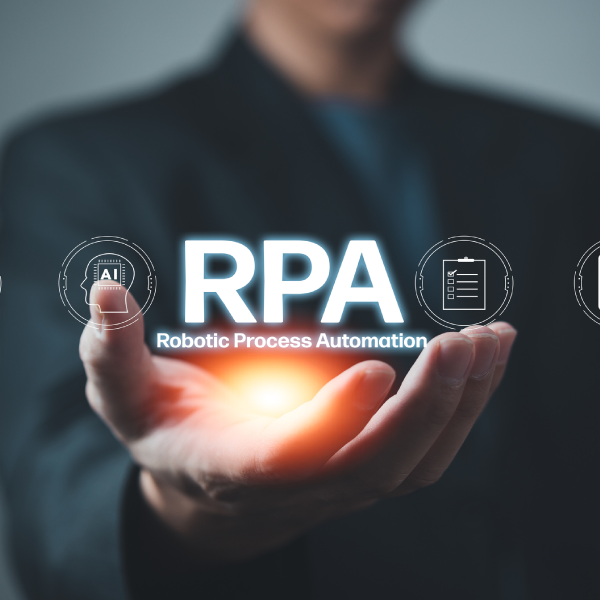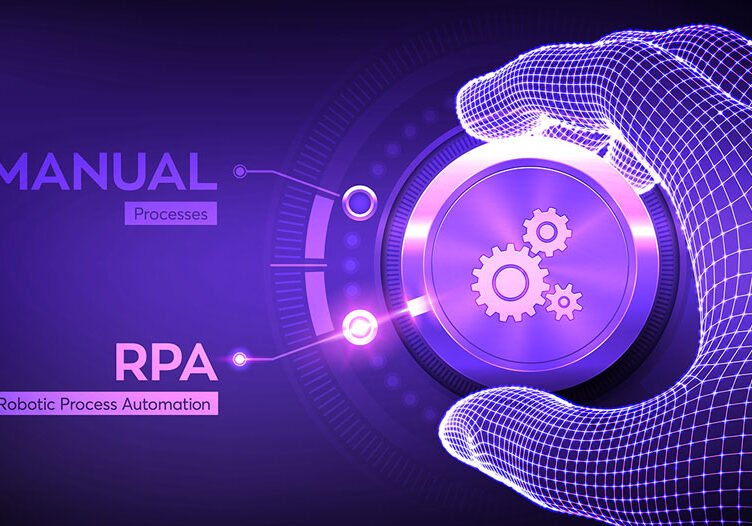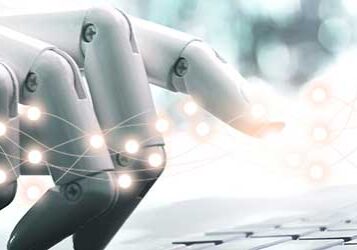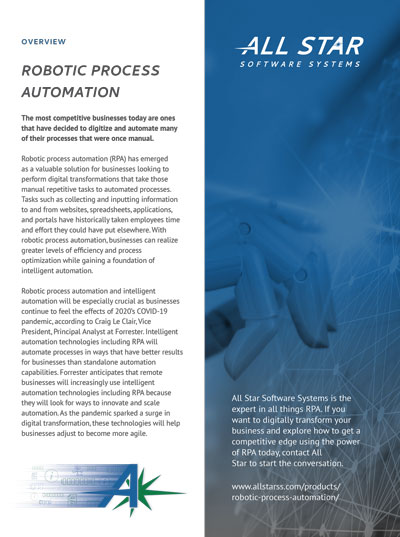
Robotic Process Automation (RPA)
Robotic process automation software (RPA) has emerged as a valuable solution for businesses looking to perform digital transformations that take those manual tasks to automated environments.
Realize greater levels of efficiency and process optimization
Robotic Process Automation
The most competitive businesses today are ones that have decided to digitize and automate many of their processes that were once manual. Robotic process automation software (RPA) has emerged as a valuable solution for businesses looking to perform digital transformations that take those manual tasks to automated environments. Tasks such as collecting, reviewing, and inputting information among websites, systems, and portals have historically taken employees time and effort they could have put elsewhere. With robotic process automation software, businesses can realize greater levels of efficiency and process optimization while gaining a foundation of intelligent automation.
Call Us: 888-791-9301
Each business has unique challenges that various
RPA solutions can address
Features & Benefits
The right RPA solution will incorporate any number of key features, as defined by Gartner. The global research and advisory firm have created several core capabilities of RPA that provide metrics for evaluating RPA solutions. Businesses should consider the following when shopping for RPA:
- Automation development focuses on how RPA users develop automations.
- Integration features incorporate a wide range of features that provide flexibility and easy integration.
- Control panel and dashboard focus on how the environment is monitored and controlled.
- Identifying change impacts means RPA should predict which automations are affected by planned changes.
- Resilience, error recovery, and security includes business continuity, redundancy, and the overall integrity of the environment.
- Integration with business rules/process automation means that the RPA will support more broad Business Process Automation (BPM) and should have integration with a BPM suite.
One of the primary benefits businesses see as a result of incorporating RPA is the ability to deploy software robots to new processes as your business needs change. RPA gives you the flexibility to onboard new processes without requiring developers to spend weeks or months coding and ripping out platforms. Your business will be able to adapt to a new speed as your employees aren’t bogged down by manual, repetitive tasks.
You’ll also be able to automate key business process activities that don’t require “human skills,” meaning skills that ask for empathy, intuition, and other non-robotic qualities. Software robots can automate interactions that a user would perform in an application so the user can devote his or her human skill set to more valuable work.
We will work with you
What is your unique challenge?
Each business has unique challenges that various RPA solutions can address. Now is the time to explore RPA for your business as its use across the wide swath of manual processes can automate things that are not typical to workflow automation. Forrester reports that 44 percent of businesses have implemented RPA and 22 percent plan to implement it in the next year. As back offices become more reliant on working from home, RPA will take more of center stage.
Related Posts

The Four Benefits of Robotic Process Automation
Modern, growing businesses are exploring automation on many levels to improve productivity, efficiency, and, ultimately, their bottom lines. But there are plenty of options for automation technologies out there that organizations can leverage. Robotic process automation is one of the most critical technologies for any business hoping for long-term success — especially in today’s era of […]

Kofax Scores High in Gartner Evaluation of Robotic Process Automation Critical Capabilities
Robotic process automation (RPA) continues to grow its footprint because businesses are realizing it delivers greater levels of efficiency and process optimization. As various RPA solutions rise in popularity, it can be difficult to know which one is right for your business. To help businesses sift through the myriad RPA solutions out there, Gartner – […]

The Capabilities of Robotic Process Automation
Businesses considering digital transformation have likely encountered Robotic Process Automation (RPA) if not heard of the term in a few contexts. RPA integrates automation capabilities that allow businesses to realize greater levels of efficiency and process optimization. With cognitive capture, process orchestration, and analytics, businesses can gain a foundation of intelligent automation. But how can […]







